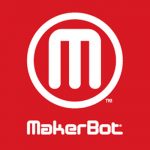 Health Tech Weekly host Jamie Davis, the Podmedic stopped by the MakerBot booth at CES 2015 to chat with Director of Public Relations Jenifer Howard about the ways that 3D printing is changing healthcare. She was involved with the “Robohand” project to create a prosthetic hand for someone using MakerBot’s 3D printers.
Health Tech Weekly host Jamie Davis, the Podmedic stopped by the MakerBot booth at CES 2015 to chat with Director of Public Relations Jenifer Howard about the ways that 3D printing is changing healthcare. She was involved with the “Robohand” project to create a prosthetic hand for someone using MakerBot’s 3D printers.
The Robohand project was initiated by two individuals, one in Seattle, Washington in the USA and the other in South Africa. They collaborated together and in just three days, using their MakerBot 3D printers and online software collaboration tools, were able to come up with a working template to print the parts for a functional 3D printed prosthetic hand.
Jenifer says that MakerBot and the 3D printing industry will continue to innovate with individuals and organizations around the world to create new tools and devices for everyday life. She noted that there are physicians and health care professionals everyday using 3D printers to make unique devices and tools for specific situations that arise in patient care.
Make sure you follow Jamie’s picks and coverage over at HTWeekly.com and the Tech Podcasts Network live CES 2015 coverage over at TPN.tv during the show where our entire CES team will be bringing you the best, the most innovative, and newest tech gadgets to you from the conference! And don’t forget to check out his shows for at NursingShow.com, MedicCast.tv, and the brand new Health Tech weekly show at HTWeekly.com.
Podcast: Play in new window | Download
Subscribe: Apple Podcasts | RSS | More

